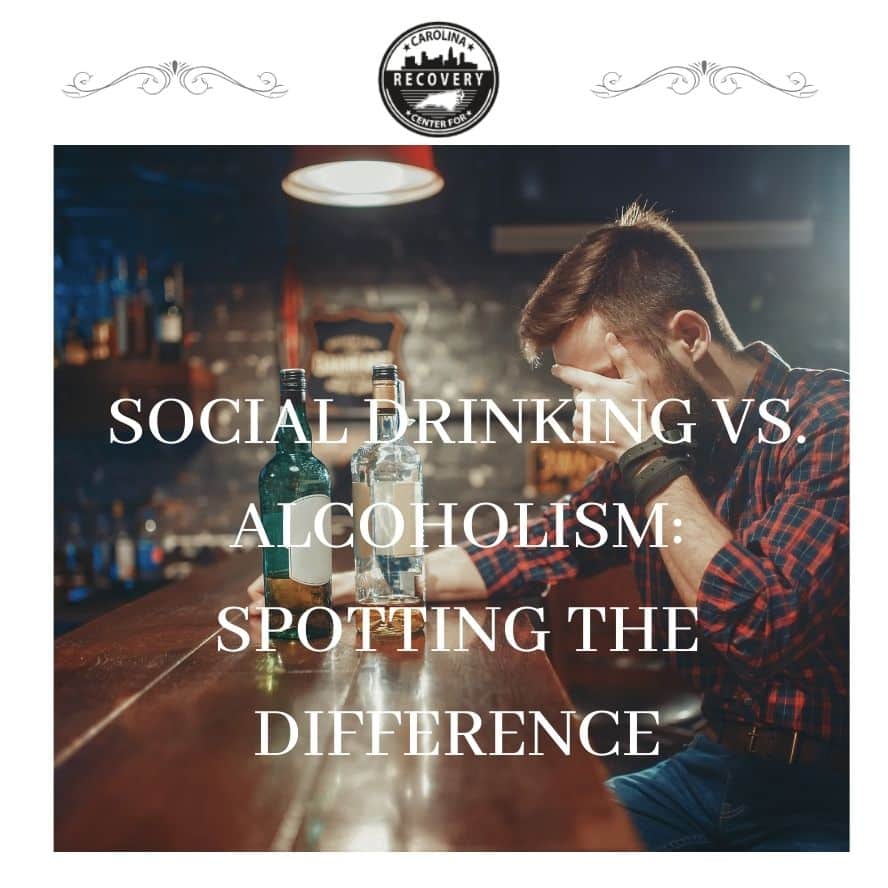Social Drinking vs. Alcoholism: Spotting the Difference

Medically Verified: 2/1/24
Medical Reviewer
Chief Editor

All of the information on this page has been reviewed and verified by a certified addiction professional.
Alcohol is the most commonly used intoxicating substance in the United States and is widely available in many settings. The sale and consumption of alcohol are legal in nearly every city and state, and most of this country’s adults report consuming alcohol occasionally.
With alcohol use being so common in the culture, it can sometimes be challenging to identify when a person’s drinking has become problematic. However, it’s important to identify signs of problematic drinking and alcoholism and seek treatment as soon as possible to avoid the serious risks of alcohol addiction.
This article will explore the differences between people who drink socially and those with alcoholism. If you or someone you love needs treatment for alcohol abuse or addiction, reach out to the Carolina Center for Recovery staff to learn about our supportive alcohol rehab programs.
Alcohol: How Much is Too Much?
The Centers for Disease Control and Prevention (CDC) provides guidelines to help people minimize their risk for alcohol-related harm. The CDC recommends that people who choose to consume alcohol should drink in moderation. But what does this mean?
Moderate drinking is defined as:
- One or fewer drinks per day for women (7 or fewer drinks weekly)
- Two or fewer drinks per day for men (14 or fewer drinks per week)
A “drink” does not mean a standard drink at a bar or restaurant. A “drink” is defined as:
- 1.5 ounces of distilled spirits
- 12 ounces of beer
- 5 ounces of wine
- 8 ounces of malt liquor
By the CDC’s guidelines, many bar and restaurant drinks may contain several servings of alcohol. For example, a typical pint of beer (16 ounces) would contain more than one “drink,” according to the CDC recommendations.
What is a Social Drinker?
Simply put, a social drinker is someone who consumes alcohol but does not lose control over their drinking and does not develop problematic drinking patterns or addiction.
Social drinkers do not exceed the CDC’s guidelines for moderate drinking over the course of the week. Some common traits of people who engage in social drinking include:
- Drinking occasionally
- Drinking only in social situations
- Do not become intoxicated often
- Rarely say or do things while drinking that they later regret
- Never spend money they can’t afford to buy alcohol
- Do not have cravings for alcohol or think about drinking while sober
- No one expresses concern about their drinking
- Doesn’t get into trouble with others or violate laws while drinking
People who drink socially may enjoy an alcoholic beverage from time to time as a way to relax, celebrate a special occasion, or for specific health benefits.
What are the Risks of Drinking Socially?
The CDC recommends moderate drinking because it has minimal risks to those who choose to consume alcohol. However, drinking any amount of alcohol can put people at risk, especially those in specific categories, including:
- Pregnant or breastfeeding women
- People who take medications that should not be combined with alcohol
- People with a family history of alcoholism or other forms of substance abuse and addiction
Alcohol is an addictive substance, and many people may unintentionally develop unhealthy or problematic drinking patterns over time. Social drinking can quickly turn into heavy drinking, which has serious risks.
Long-term risks of heavy drinking
Heavy drinking is defined as:
- Eight or more alcoholic drinks per week for women
- Fifteen or more alcoholic beverages per week for men
Some of the most serious risks of heavy drinking include:
- High blood pressure
- Cardiovascular disease and heart attach
- Higher risk of mouth, throat, stomach, breast, colon, and other cancers
- Liver damage
People who drink heavily are also at increased risk of :
- Causing or being involved in a car accident
- Being the victim of a sexual assault or other violent crime
- Becoming injured or dying from falling, drowning, exposure to heat and cold, and other preventable causes
Prolonged periods of heavy drinking can lead to physical dependence and alcoholism. Alcoholism is a complete loss of control over your drinking. People with alcoholism must seek medical treatment to safely detox from alcohol and complete a comprehensive treatment program to help them avoid relapse.
Social Drinking vs. Alcoholism
How can you tell the difference between social drinking vs. alcoholism? There are a few signs that someone is struggling with alcoholism. These include:
- Drinking more or longer than you planned to
- Spending a lot of time getting alcohol, drinking, and recovering from hangovers
- Falling behind in your responsibilities at home, work, or school because of drinking
- Engaging in dangerous activities while intoxicated, such as having risky sex or driving under the influence
- Needing to drink more alcohol to get the desired effects
- Wanting to stop but feeling like you can’t
- Experiencing withdrawal symptoms like shaking, sweating, hallucinations, anxiety, or insomnia when you stop drinking or drink less
No one chooses to develop alcohol dependence or addiction. If your social drinking has changed and you aren’t in control of how much you drink, reach out for help. Comprehensive treatment can help you regain control over your drinking and future.
Get Help Now
If you’re wondering about the risks of social drinking vs. alcoholism, you may need treatment for an alcohol use disorder. Comprehensive alcohol abuse treatment can help you get your life back on track as you work toward a healthier, sober future. Call the Carolina Center for Recovery specialists today to learn about our effective treatment plans or to find support during any stage of your recovery.
References:
- Centers for Disease Control and Prevention (CDC): Dietary Guidelines for Alcohol, Retrieved September 2023 from https://www.cdc.gov/alcohol/fact-sheets/moderate-drinking.htm
- Centers for Disease Control and Prevention (CDC): Alcohol Use and Your Health, Retrieved September 2023 from https://www.cdc.gov/alcohol/fact-sheets/alcohol-use.htm

